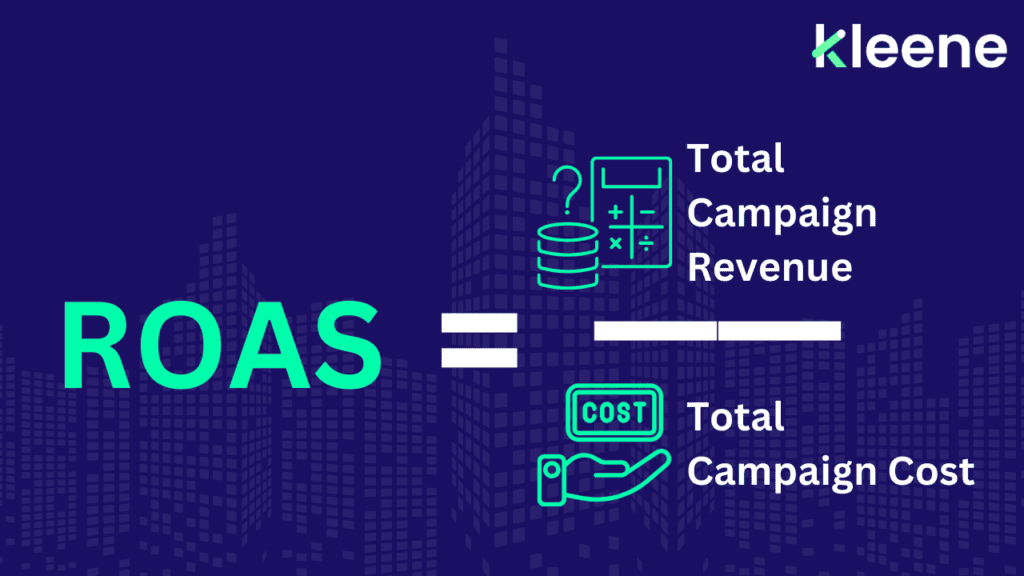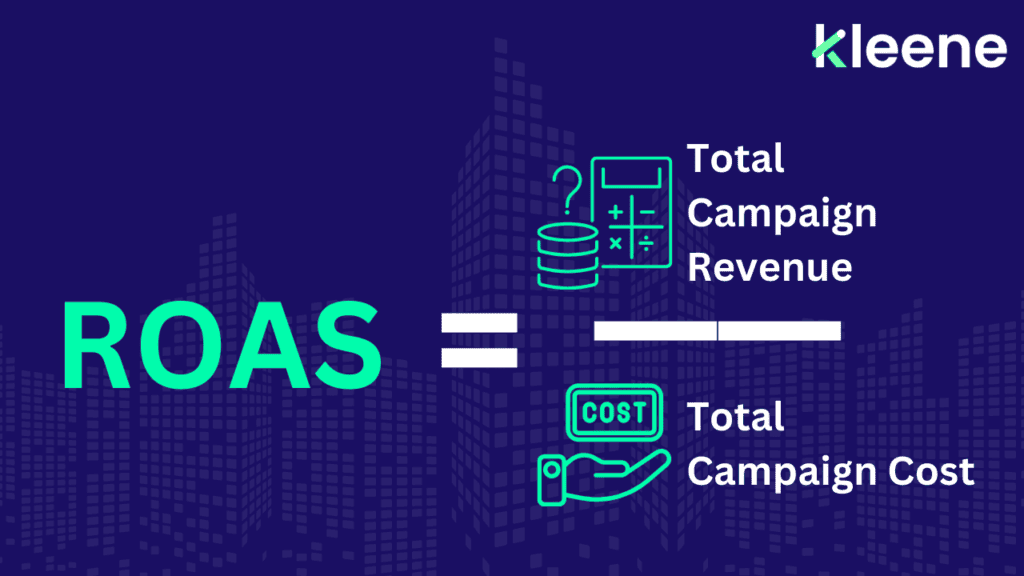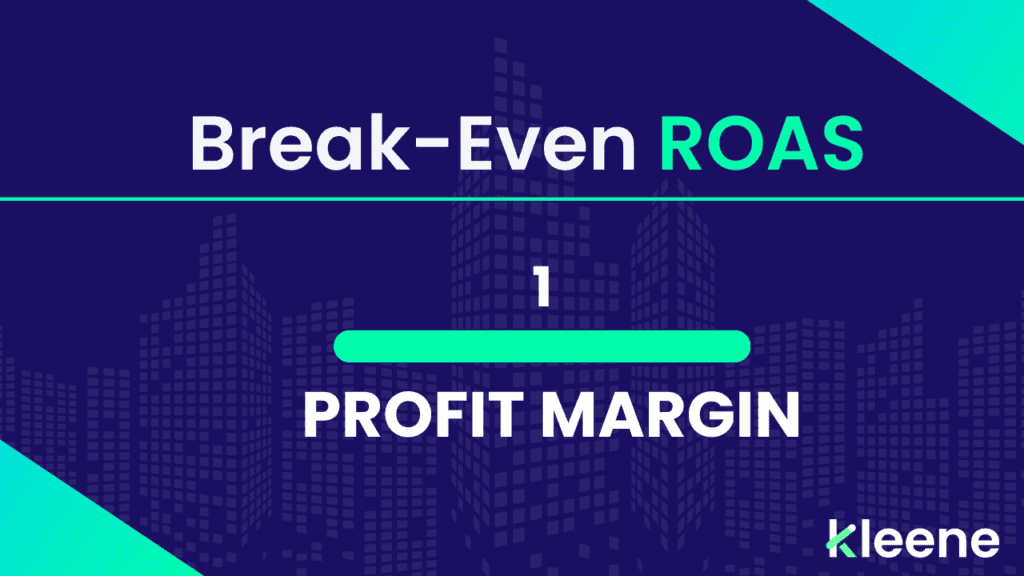Calculating the Return on Ad Spend (ROAS) is crucial for any business aiming to optimize its marketing strategy and budget allocation. Understanding how to calculate ROAS can provide insights into the efficiency of your advertising efforts, helping you make informed decisions that maximize profitability. This article delves into the intricacies of ROAS, providing a step-by-step guide, discussing common challenges, and highlighting essential tools and strategies to ensure accurate measurement.
What is ROAS?
ROAS, or Return on Ad Spend, is a key performance indicator that measures the revenue generated for every dollar spent on advertising. It is calculated using the following formula:

Understanding how to calculate ROAS can help businesses assess the effectiveness of their advertising campaigns and make data-driven decisions to optimize their marketing spend.
Why is ROAS Important?
ROAS is a critical metric for evaluating the performance of advertising campaigns. It provides insights into the profitability of your ad spend and helps you determine whether your marketing efforts are yielding positive returns. A higher ROAS indicates that your ads are generating more revenue than they cost, while a lower ROAS suggests the need for adjustments to improve performance. Understanding how to calculate ROAS is essential for making these evaluations.
Key Messages for Accurate ROAS Calculation
- Black Box Solutions Don’t Work: Tailored Tools are Essential: Generic, one-size-fits-all solutions often fail to capture the nuances of individual businesses. To achieve accurate ROAS measurements, you need a tool tailored to your unique business needs. Custom solutions consider specific variables and dynamics, providing more precise insights on how to calculate ROAS effectively.
- The Necessity of Full Channel Measurement Tools: Without comprehensive measurement tools, companies cannot accurately measure brand spending or understand resource allocation. Full channel measurement tools track all marketing channels, providing a holistic view of performance and facilitating more effective budget allocation. This is crucial for accurately determining how to calculate ROAS.
- The Importance of Marketing Spend Optimization Tools: Effective marketing spend optimization tools not only measure the impact of each channel but also utilize predictive models to forecast the impact of budget shifts on ROAS, Customer Acquisition Cost (CAC), and Lifetime Value (LTV). This enables more strategic allocation decisions and enhances overall marketing efficiency. Learning how to calculate ROAS using these tools can significantly improve your marketing outcomes.
- Accurate ROAS Prediction Requires Comprehensive ToolsTo accurately predict and calculate ROAS, you need a measurement tool that uses advanced algorithms to consider all touchpoints, both online and offline. This holistic approach ensures that all factors influencing ROAS are accounted for, providing a more accurate and actionable metric. Knowing how to calculate ROAS with such comprehensive tools is vital for precise results.
Step-by-Step Guide: How to Calculate ROAS
Step 1: Gather Your Data
To calculate ROAS, you need accurate data on both the revenue generated from your ads and the cost of your ads. This includes:
- Revenue from Ads: Total revenue directly attributed to your advertising campaigns.
- Cost of Ads: Total amount spent on advertising, including costs for ad creation, distribution, and management.
Step 2: Apply the ROAS Formula
Using the gathered data, apply the ROAS formula:

For example, if you generated $10,000 in revenue from a campaign that cost $2,000, your ROAS would be 10,000/2,000=5
This means you earned $5 for every $1 spent on advertising. Understanding how to calculate ROAS with this formula is fundamental.
Step 3: Analyse Your ROAS
Interpret your ROAS to determine the effectiveness of your ad spend. A ROAS greater than 1 indicates a profitable campaign, while a ROAS less than 1 suggests that your ads are costing more than they generate in revenue. Knowing how to calculate ROAS and analyse it is crucial for optimizing your campaigns.
Step 4: Optimize Your Campaigns
Use your ROAS data to identify areas for improvement. Adjust your advertising strategies to focus on high-performing channels and reduce spend on underperforming ones. This iterative process helps you maximize the efficiency and profitability of your marketing efforts. Learning how to calculate ROAS and using it to optimize campaigns can lead to significant improvements.
Common Challenges in Calculating ROAS
Attribution Issues
Accurate ROAS calculation requires precise attribution of revenue to specific ads. Multi-touch attribution models can help by considering all interactions a customer has with your brand before converting, providing a more accurate picture of ad performance. Understanding how to calculate ROAS while addressing attribution issues is essential for accuracy.
Offline and Online Integration
Many businesses struggle to integrate offline and online data. A comprehensive measurement tool that accounts for both can help ensure all touchpoints are considered, leading to more accurate ROAS calculations. Learning how to calculate ROAS with integrated data is key to holistic measurement.
Data Quality
Poor data quality can skew ROAS calculations. Ensure your data is accurate and up-to-date by implementing robust data management practices and using reliable tools. Knowing how to calculate ROAS with high-quality data ensures reliable results.
Tools for Accurate ROAS Calculation
Custom Measurement Solutions
Tailored tools designed specifically for your business can provide more accurate ROAS measurements by accounting for unique variables and business dynamics. Understanding how to calculate ROAS with custom solutions can enhance precision.
Full Channel Measurement Tools
Tools that track all marketing channels provide a holistic view of your advertising performance, enabling more effective resource allocation. Learning how to calculate ROAS using full channel measurement tools ensures comprehensive insights.
Predictive Modeling Tools
Advanced tools that utilize predictive models can forecast the impact of budget shifts on ROAS, CAC, and LTV, helping you make more strategic allocation decisions. Knowing how to calculate ROAS with predictive models is crucial for strategic planning.
Comprehensive Tracking Solutions
Tools that consider all touchpoints, both online and offline, ensure all factors influencing ROAS are accounted for, providing a more accurate metric. Understanding how to calculate ROAS with comprehensive tracking solutions is essential for accurate measurement.
Conclusion
Understanding how to calculate ROAS is essential for optimizing your marketing strategy and budget allocation. By using tailored measurement tools, full channel tracking, predictive models, and comprehensive tracking solutions, you can ensure accurate ROAS calculations and make more informed decisions to maximize your return on ad spend. Embrace these strategies and tools to enhance your marketing efficiency and drive better business outcomes.
By focusing on how to calculate ROAS and implementing the right tools and strategies, businesses can achieve a higher return on their advertising investments. Remember, the key is to use a tailored approach, full channel measurement tools, and predictive modeling to optimize your marketing spend. This comprehensive guide on how to calculate ROAS should help you navigate the complexities of measuring your ad spend effectiveness and improving your marketing ROI.
Understanding how to calculate ROAS and implementing strategies to enhance it can significantly improve the profitability of your advertising campaigns. Use this guide to ensure accurate ROAS calculations and make data-driven decisions that maximize your marketing effectiveness. Learning how to calculate ROAS is a continuous process that evolves with your business, ensuring you stay ahead in a competitive market.
Kleene helps decision-makers make smarter, faster decisions, based on AI recommendations that are built on data from across the business for a powerful competitive advantage. If you need help setting valuable goals, our experts at Kleene can guide you in the best metrics to focus on delivering high-value results.
Next Steps for increasing ROAS
Integrating cutting-edge technological platforms, such as Kleene’s Decision Intelligence Platform, can make it easier for Chief Marketing Officers to implement Marketing Mix Modelling and ensure ROI.
By streamlining the implementation of Marketing Mix Modelling , our platform enables Marketing teams to access deeper insights more efficiently and effortlessly. This efficiency is achieved through:
- Comprehensive Data Integration: Our platform excels in aggregating a wide array of data sources, including sales, marketing, consumer behaviour analytics, finance, and logistics. This extensive integration facilitates a more thorough and accurate analysis.
- Holistic Campaign Analysis: The platform is adept at measuring the impact of both online and offline campaigns, ensuring a comprehensive view of marketing efforts. Enhanced Insights from Comprehensive Data: with the inclusion of diverse data sets, the platform provides richer insights, enabling more informed decision-making
- User-Friendly Interface: Kleene’s platform is designed with user experience in mind, allowing CMOs and their teams to navigate complex data analytics with ease. This simplifies the process of deriving actionable insights from MMM results.
- Exceptional Support and Expertise: Kleene partners with clients to ensure a significant return on investment and effective implementation of the platform, providing unparalleled support and expertise.
Contact a Kleene.ai data expert to learn more about how their Decision Intelligence Platform can help your company get a better ROAS and help you make better data-driven marketing decisions.
You may also like:
Return on Ad Spend: 10 Proven Strategies to Maximize
7 Powerful Tips on How to Work Out ROAS Accurately
The Ultimate Guide to ROAS Marketing: 7 Powerful Tips to Master ROAS
ROAS Formula: 7 Effective Strategies to Amplify Your Advertising Returns
Frequently Asked Questions (FAQs)
How to Calculate ROAS?
To calculate ROAS, divide the revenue generated from ads by the cost of those ads. This formula provides a ratio that indicates the return on your advertising investment. Knowing how to calculate ROAS is fundamental for assessing campaign effectiveness.
How to Calculate the ROAS?
The ROAS is calculated by dividing the revenue generated from ads by the cost of those ads. This metric helps businesses assess the effectiveness of their advertising campaigns. Knowing how to calculate ROAS accurately is crucial for marketing success.
How to Calculate Break Even ROAS?
The break-even ROAS is the point at which the revenue generated from ads equals the cost of those ads. It is calculated using the following formula:

Understanding how to calculate break even ROAS helps in setting realistic performance targets.
How to Calculate ROAS for Facebook?
To calculate ROAS for Facebook ads, divide the revenue generated from Facebook ads by the cost of those ads. This metric helps assess the effectiveness of your Facebook advertising campaigns. Knowing how to calculate ROAS for Facebook is important for social media marketing.
How to Calculate ROAS for Facebook Ads?
Similar to the general ROAS calculation, the ROAS for Facebook ads is determined by dividing the revenue generated from Facebook ads by the cost of those ads. Understanding how to calculate ROAS for Facebook ads can optimize your social media strategy.
How to Calculate ROAS for Google Ads?
To calculate ROAS for Google Ads, divide the revenue generated from Google Ads by the cost of those ads. This metric helps assess the effectiveness of your Google advertising campaigns. Knowing how to calculate ROAS for Google Ads is essential for search engine marketing.
How to Calculate ROAS in Digital Marketing?
In digital marketing, ROAS is calculated by dividing the revenue generated from all digital ads by the cost of those ads. This metric helps assess the overall effectiveness of your digital marketing campaigns. Understanding how to calculate ROAS in digital marketing is key to optimizing online strategies.
How to Calculate ROAS in Google Ads?
To calculate ROAS in Google Ads, use the formula:

This metric helps assess the effectiveness of your Google Ads campaigns. Knowing how to calculate ROAS in Google Ads is vital for efficient ad spend.
How to Calculate ROAS Percentage?
To calculate ROAS percentage, multiply the ROAS by 100. This converts the ROAS into a percentage, making it easier to interpret. Understanding how to calculate ROAS percentage helps in clearer performance evaluation.
How to Calculate ROE and ROA?
ROE and ROA are both critical metrics. ROE is calculated by dividing net income by shareholders’ equity, while ROA is calculated by dividing net income by total assets. Knowing how to calculate ROE and ROA is essential for comprehensive financial assessment.
How to Calculate Target ROAS?
Target ROAS is the desired return on ad spend for a campaign. It is calculated based on business goals and profit margins, helping set benchmarks for campaign performance. Understanding how to calculate target ROAS helps in setting and achieving marketing objectives.
How to Calculate Target ROAS in Google Ads?
In Google Ads, target ROAS is set as a bidding strategy. It involves determining the desired return and adjusting bids to meet that target, ensuring your ads are cost-effective. Knowing how to calculate target ROAS in Google Ads optimizes bidding strategies.



